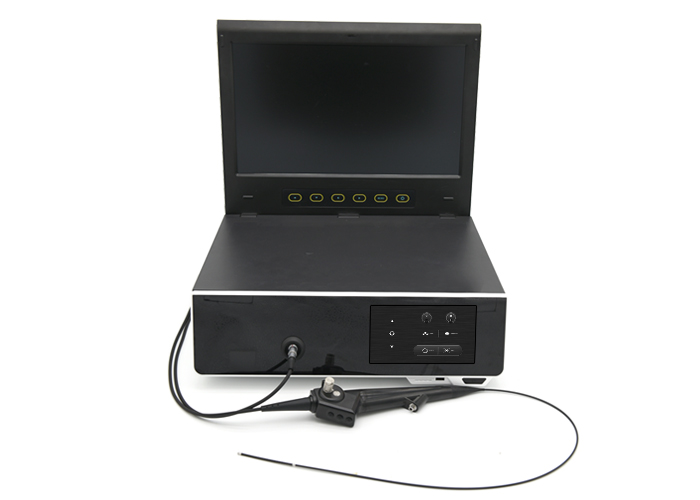The commonly used industrial endoscopes can be divided into three types: video electronic endoscopes, optical fiber endoscopes, and optical endoscopes. Industrial video electronic endoscope is a new type of non-destructive testing instrument that integrates light, machine and electricity into the cavity for internal quality inspection, detection and analysis. With the continuous development of electronic manufacturing technology, especially the advancement of image sensor technology, electronic endoscopes occupy an increasing proportion in the market. So why choose industrial video electronic endoscope?
1. The electronic endoscope image is clear, the color is vivid, and the resolution is high. The electronic endoscope image is specially processed to enlarge the image, which is particularly suitable for the observation of the details, which is difficult to achieve with the fiber endoscope. It avoids the shortcomings that the optical fiber is easy to break, the brightness of the light guide is easy to attenuate, and the image magnification is easy to be distorted.
2. It has video recording and storage functions, which can store the images of industrial site inspections for easy viewing and continuous comparison and observation, as well as data storage for industrial site inspections, which is convenient for future access, reduces repetitive work of personnel and improves work efficiency.
3. One person operates, and multiple people can watch at the same time. It is convenient for multiple inspectors to conduct comprehensive analysis of the same inspected object, quickly take pictures, and reduce the time of endoscopy. Make the test results more comprehensive and accurate.

How to choose the right industrial endoscope?
There are many types of industrial endoscopes. How to choose a suitable endoscope requires consideration of many factors. In addition to considering the type of endoscope, the specific selection also needs to consider the diameter, length, viewing direction, focal length and other technical indicators of the probe. At the same time, the use environment of endoscopes is complicated, and water-proof, oil-proof, corrosion-resistant, and wear-resistant properties need to be considered. Generally, the type of industrial endoscope used must be determined according to the location and requirements of the specific inspection object. At least the inspection location, direction, minimum resolution requirements, channels, measurement records, etc. must be considered. Complex products usually require multiple models to cooperate use.
Generally, hard optical lenses are easy to use, durable, and have good imaging effects. They are mostly used for products that are not bent and whose detection range is within 500mm. They are suitable for the detection of straight holes. Video electronic endoscopes have multiple functions, flexible use, high reliability, and wide applicability. They are suitable for various products with complex internal structures or where quantitative detection and comparative analysis are required. However, due to manufacturing technology, the probe It is impossible to make the CCD chip small, making it difficult for the probe diameter to be less than 4mm. Video electronic endoscopes can replace straight rod mirrors and fiber optic mirrors. Fiber optic scopes are easy to damage, have a short service life, and have poor definition. The imaging effect and bending performance are far inferior to video electronic endoscopes, but their diameter can be made very thin, mostly used for inner diameters below 4mm, video electronic endoscopes cannot Products tested.